please remember you can click on a photo to see a larger version & highlighted text are links to additional information
Home Waters
We weren't in a hurry Sunday morning, but we are early risers. The Lady finished her first round of exercises as I finished putting packs and duffels in the camper. Highway 88 was open again from the Tamarack Fire so it was an easy drive over to intersect with 395 and fill up the truck with cheaper Nevada gas.
We had two nights available to spend out. Where to go? No real plans, lots of possibilities, it would come to us. We were in the Walker River canyon south of Walker when it came to me. I made the suggestion to the Lady. "The access is intimidating," I added. "There will be a good chance we'll be alone up there." The Lady agreed.
Our camp was set up and we were settled in by noon.
This is a high country headwater stream, a tributary to the Walker River. It is home waters of the Lahontan Cutthroat Trout.
This was our third visit up here. The stream is open to fishing but with special regulations, catch and release only and single barbless hook on an artificial lure. I did not want to fish. The stream was twice as low as I've seen before, a consequence of our extreme drought. It did not want to further stress this native, remnant population of this threatened species of trout.
The stream travels through several small, beautiful meadows.
The sky was clear of wildfire smoke and clouds built throughout the day. The high temperature was hot, in the mid eighties, here at 8600 feet.
We spent the afternoon carefully
working the edge of the creek and spotting trout. The Lady took the opportunity
for her first barefoot excursion on river rocks since her right knee
replacement. It takes work to learn to trust a new joint and your muscles again on uneven terrain.
We took two and a half hours to walk along .75 mile of creek. The meadows, long protected from cattle grazing, are in good shape but stressed from heat and drought. Here on the first of August, many of the stream side willows are already turning yellow. We found two fellows fly fishing. We made a wide circle around them so not to disturb. We weren't quite alone up here, but only two others in the area was pretty darn good. They drove out in the late afternoon.
Our evening walk was back up the valley in the dimming light.
Clouds had boiled around us all afternoon but we stayed free of storm.
Lake Lahontan, a huge pluvial lake, was at its peak water level 12,700 years ago. It filled a large area of western Nevada and was fed from the west by the Truckee River system, the Carson River system, and the Walker River system. As the glaciers receded and the climate warmed, the water level of ancient Lake Lahontan dropped and now only Pyramid Lake and Walker Lake remain. Large trout evolved in this rich ecosystem and ran up the inflow rivers to spawn. As the environment changed, small populations remained in tiny headwater streams and no longer moved down to the lakes.
When immigrant migration moved into this area with the California Gold Rush, Pyramid Lake and Walker Lake held abundant and remarkable trout, in fact some of the largest trout in the world. The upstream spawning runs must have been incredible. Higher up on the Truckee River, Lake Tahoe also held huge Lahontan Cutthroat trout. These were the large fish Mark Twain wrote about seeing in Lake Tahoe in his book Roughing It.
All that changed as we went to work and drove this species of trout to the brink of extinction.
Completed in 1905, Derby Dam on the Truckee River was the Bureau of Reclamation's first dam project. It diverted water from the Truckee River to create the "Oasis in the Desert", the agricultural lands around Fallon, Nevada. Derby Dam also blocked Pyramid Lake's Lahontan Cutthroat from moving upstream to their spawning beds. Oops, no spawning, no trout, and these trout quickly spiraled toward extinction. The current replacement cutthroat fishery in Pyramid Lake is a product of hatchery production. It seems to take us a long time to learn from and attempt to rectify our mistakes. In 2019 construction was started on a structure that will allow passage of Lahontan Cutthroat trout back up to their ancestral spawning grounds -
Back after more than a century.
The Lahontan Cutthroat in Walker Lake faced a similar fate but not from a dam. Upstream water diversions devastated habitat. Take all the water away and trout die. That should not be hard to comprehend. With no inflow into the lake, Walker Lake is now too alkaline to support any fish life. Walker Lake is dead. These signs placed along the West Walker River in the West Walker Canyon tell the story.
Unfortunately the last sign above didn't get proper proof reading prior to being placed. Walker Lake does not "still produce world class fishing." Fish cannot survive in Walker Lake today. The last sentence is correct though - "Several genetically pure remnant populations of this threatened species are maintained in remote tributaries of the Walker River" - home waters.
It took only a century and a half to almost destroy an once incredible fishery and beat this trout species to the edge of extinction. So it was an honor for Julie and me to spend a couple of days in one of the remaining refuges.
Besides a chance to spend time with these trout, Monday was also Julie's first real hike after her right knee replacement. I could have subtitled this blog post, "On the Trail to Recovery."
We headed up into the upper meadows of this small stream. It was only 2.5 miles on an unmaintained trail, but we would take all day. The Lady took many happy breaks to "ice" her knee.
The water was cold and the Lady repeated over and over, "This is better icing than I can do at home!"
The upper meadows sit at 9000 feet, just below the crest of the Sierra Nevada.
Spring time with its flowers was still hanging on at this elevation.
I noted two concerns with the stream conditions. One was the low water flow. I expect it will be possible to find only remnant pools of water up here come October. Second was silt in the stream bed. We've had recent thunderstorms with cloudbursts that carried loads of silt into our rivers and streams. With two years now of very low snow packs, we've not had snow melt runoff of a volume to flush streams of these sediments. This will be evident in coming photos.
We spent a few hours in the upper meadows. The solitude was cleansing. We were alone and at home.
We lazily and carefully moved along the creek and looked for trout.
Trout need clean gravels to spawn, lay eggs, and for their offspring to survive. This is the concern about sediments. But we did see several tiny fingerlings, baby native Lahontan Cutthroat trout.
With the clear water, the trout are extremely wary. It takes stealth to not disturb them. And, we did not want to disturb.
It is a rough trail up into the upper meadows. The lady did extremely well and showed no repercussions from this first hike. She is officially on the trail to recovery.
After dinner, we revisited the "big rock". This is a huge block of granite that has broken in two and displays classic examples of how exposed granite fractures.
We also noted what happens with lodgepole pines when they spout and grow close to big rocks.
The mornings here were wonderfully cool, in the lower forties. We took one last walk at first light with our mugs of coffee before heading back home.
Home waters are indeed very special places. Let's treasure them.

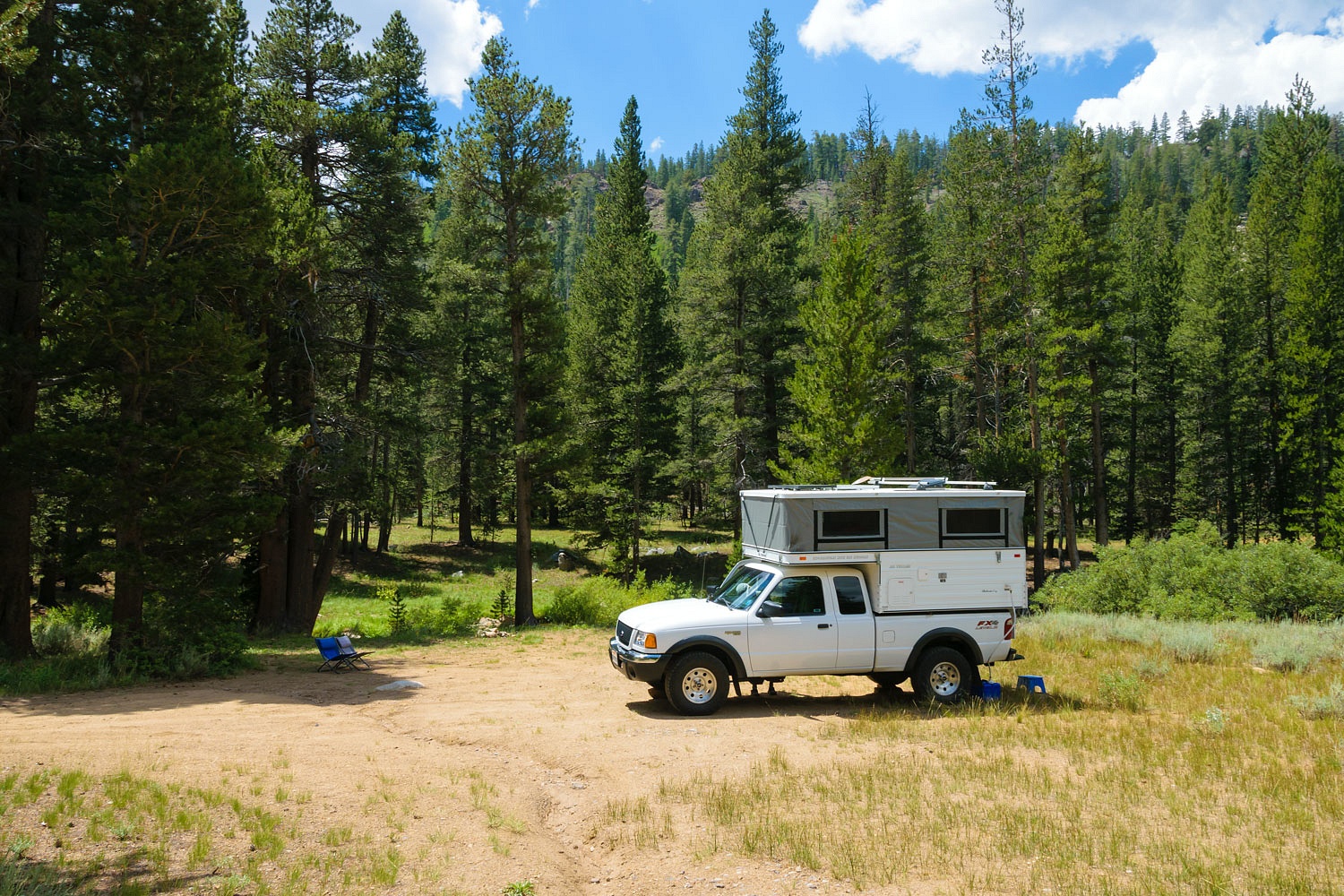
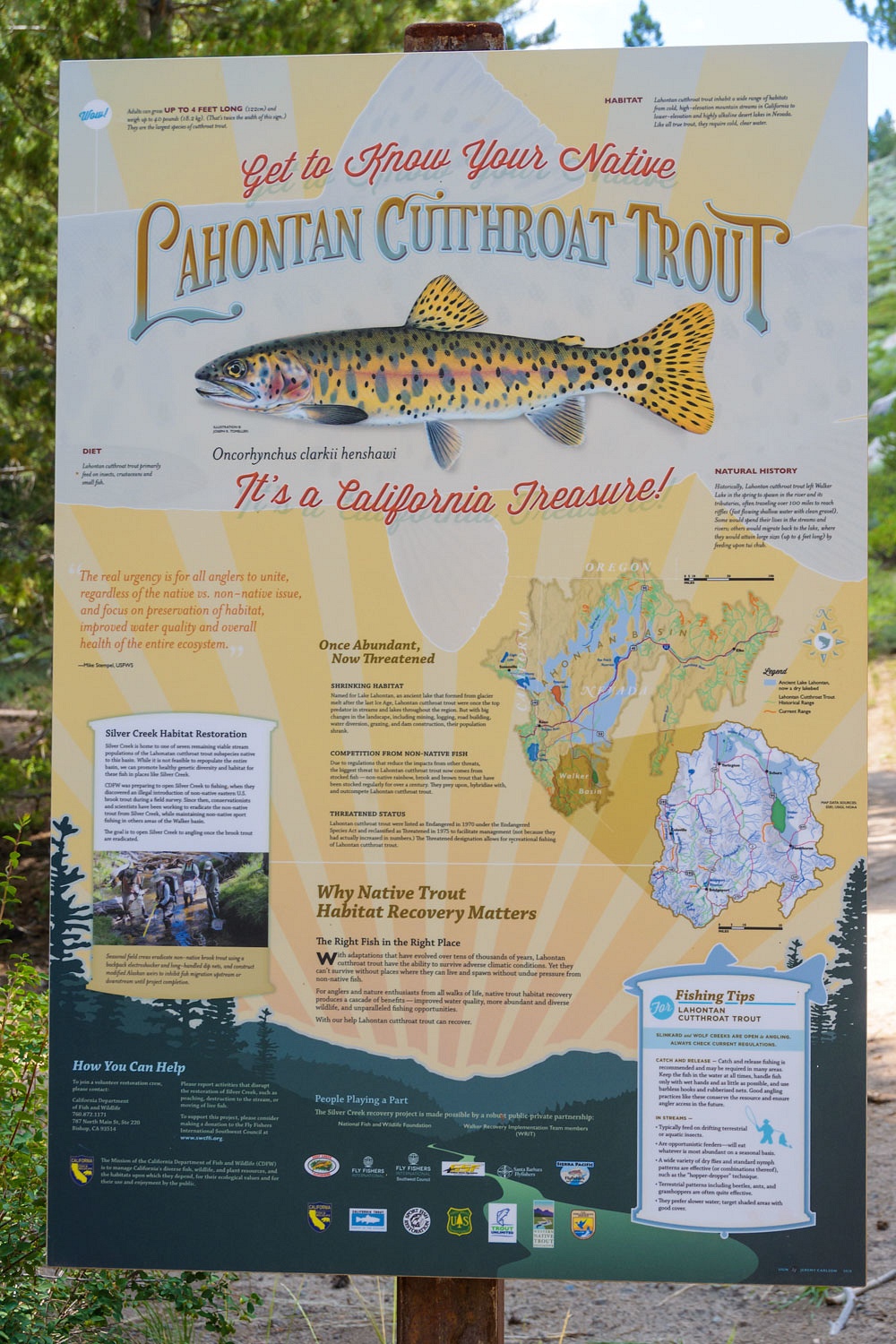
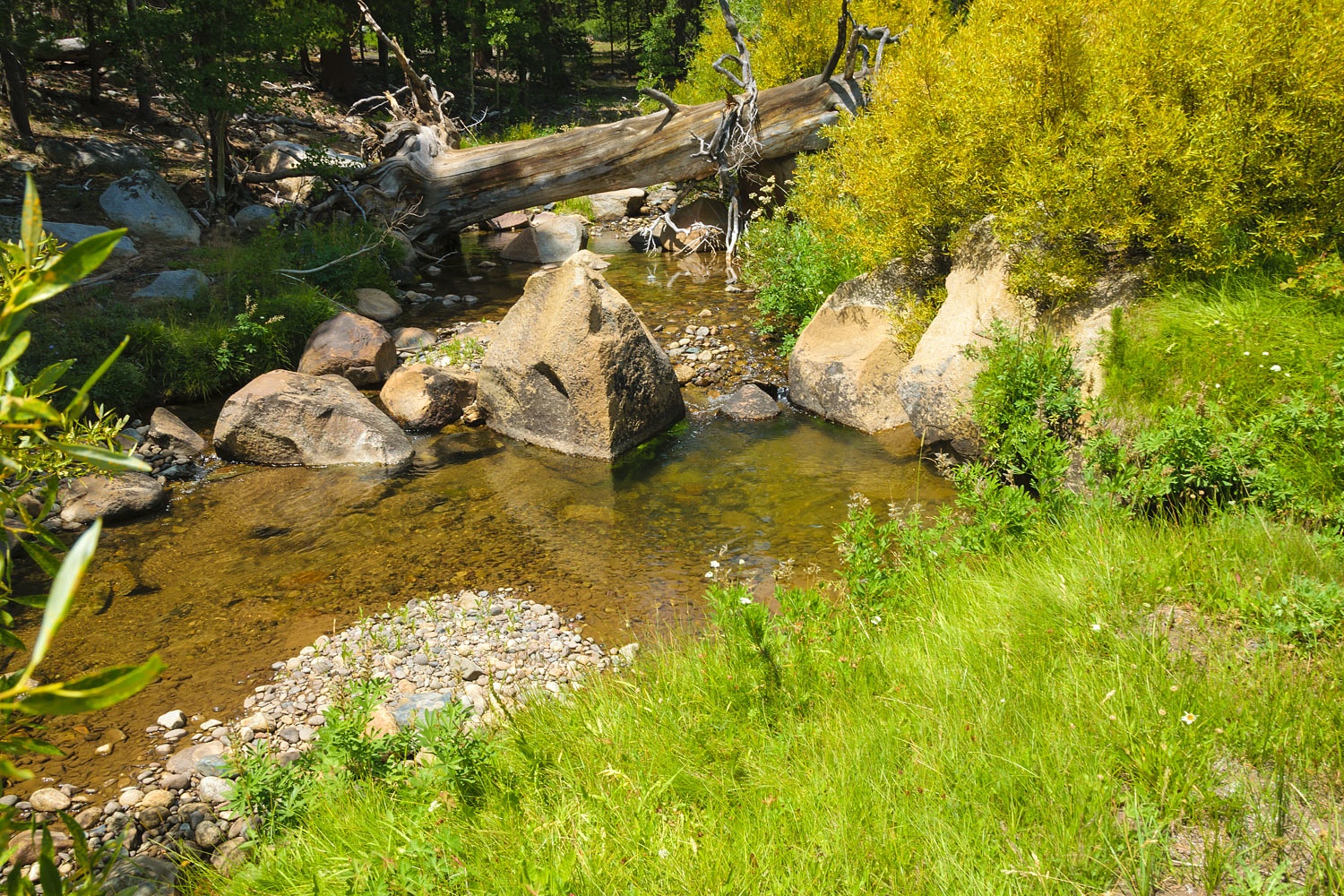
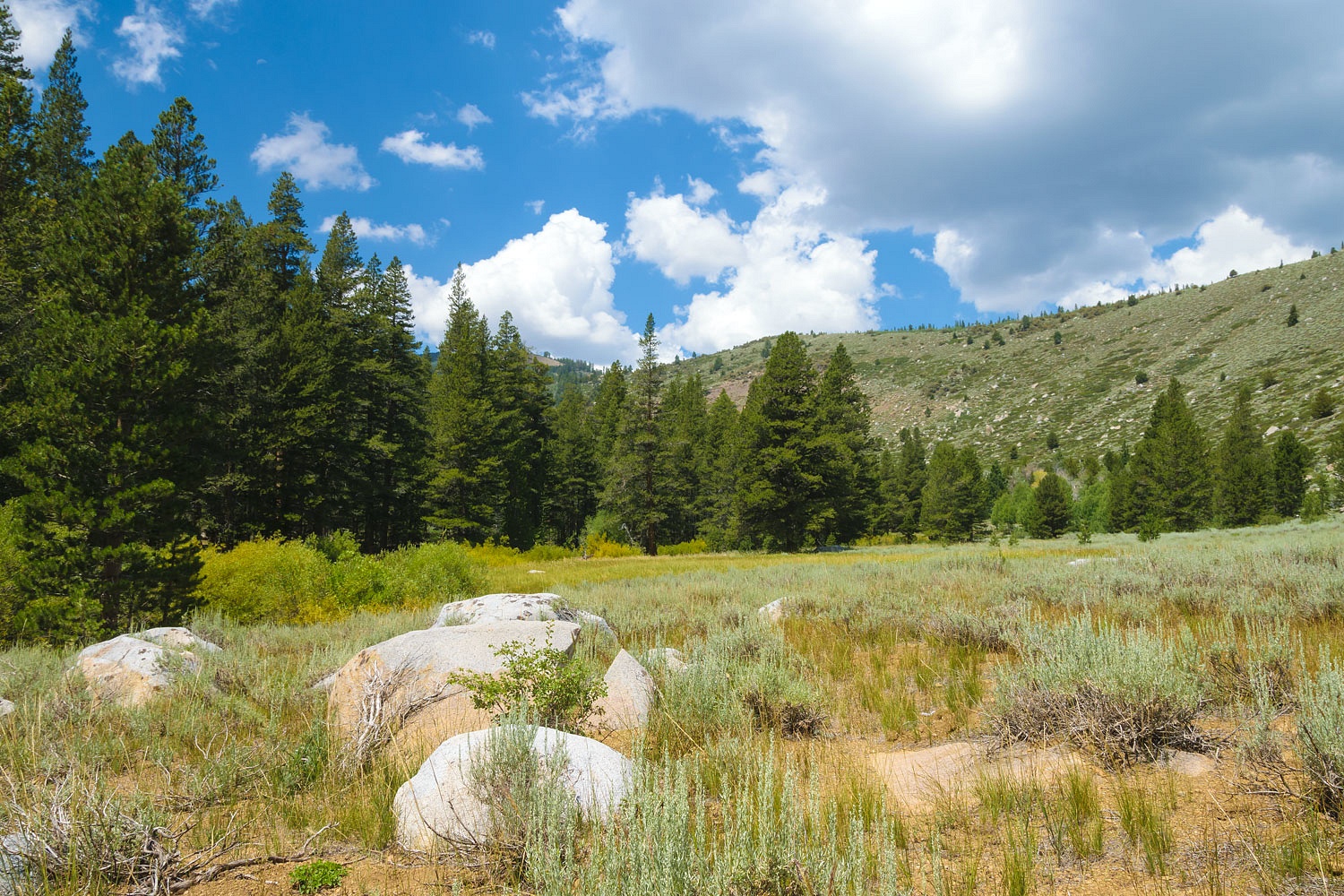
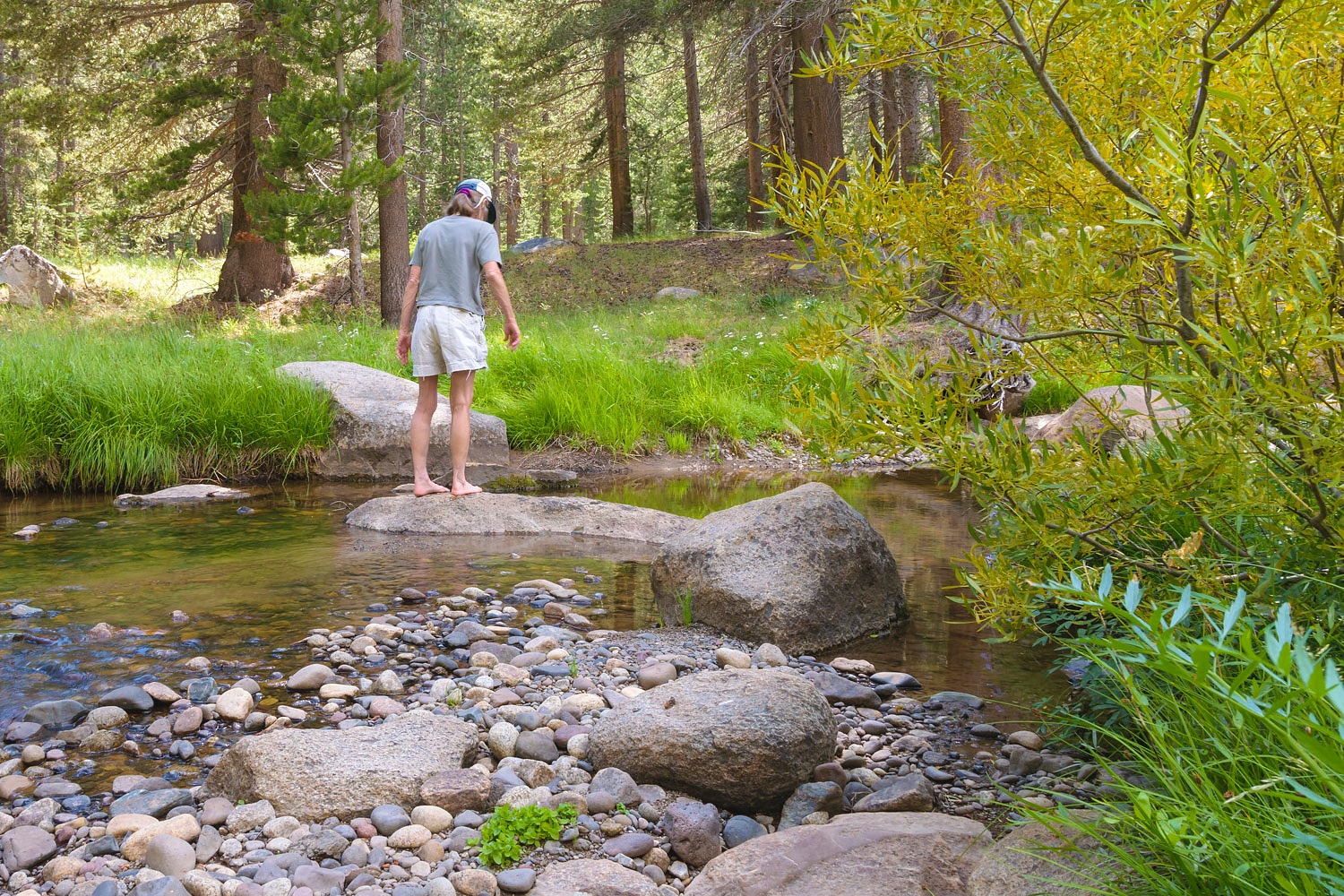
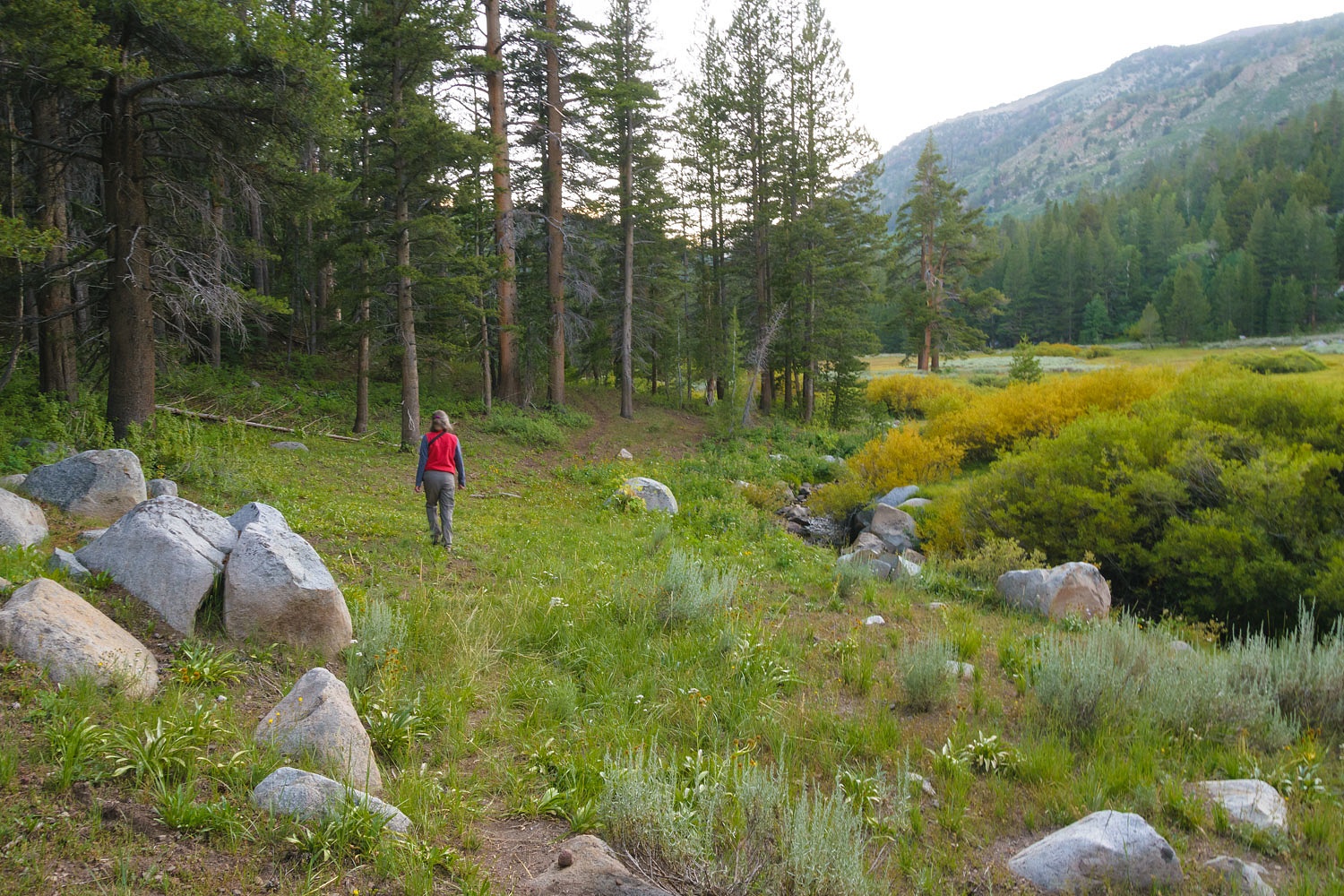
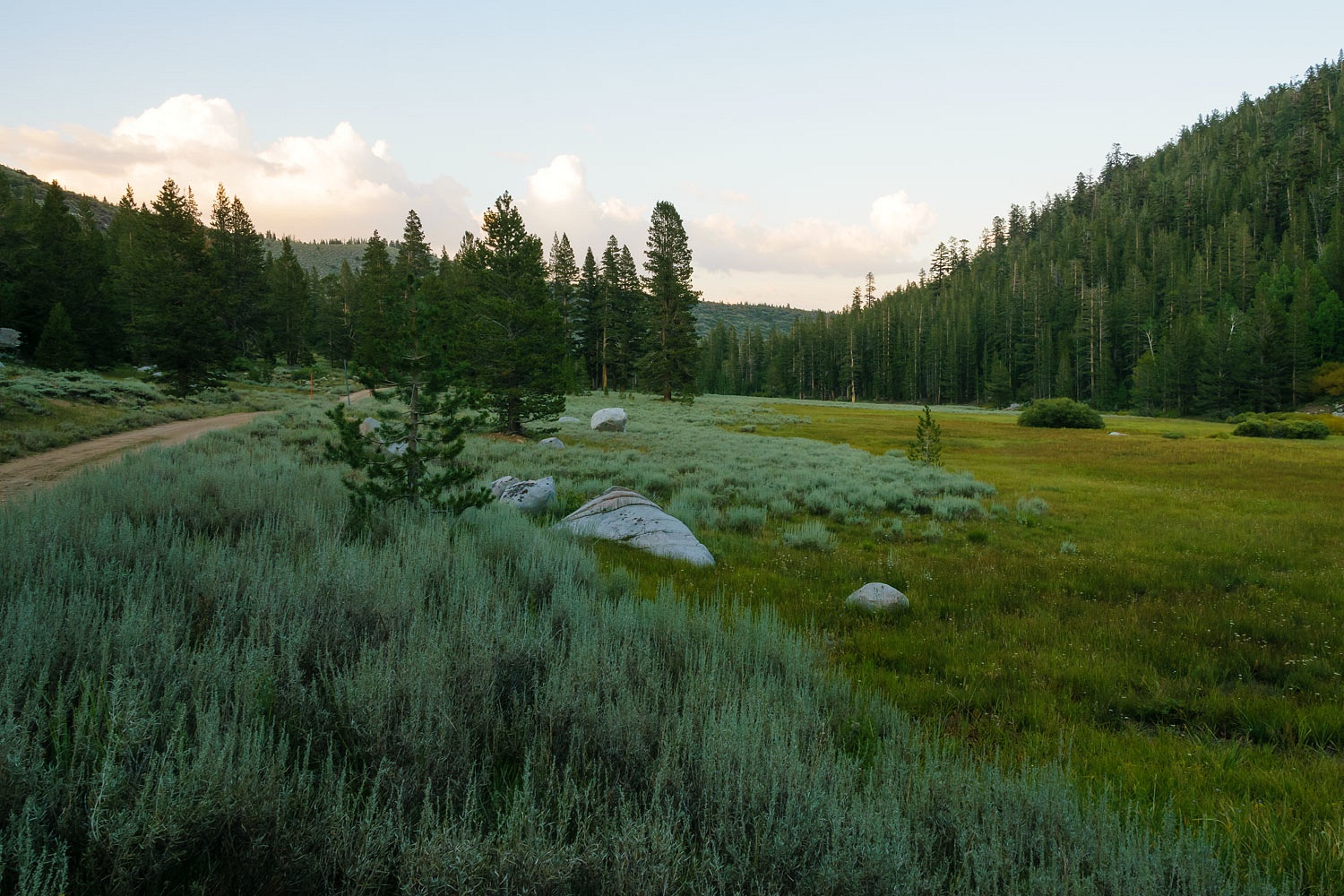
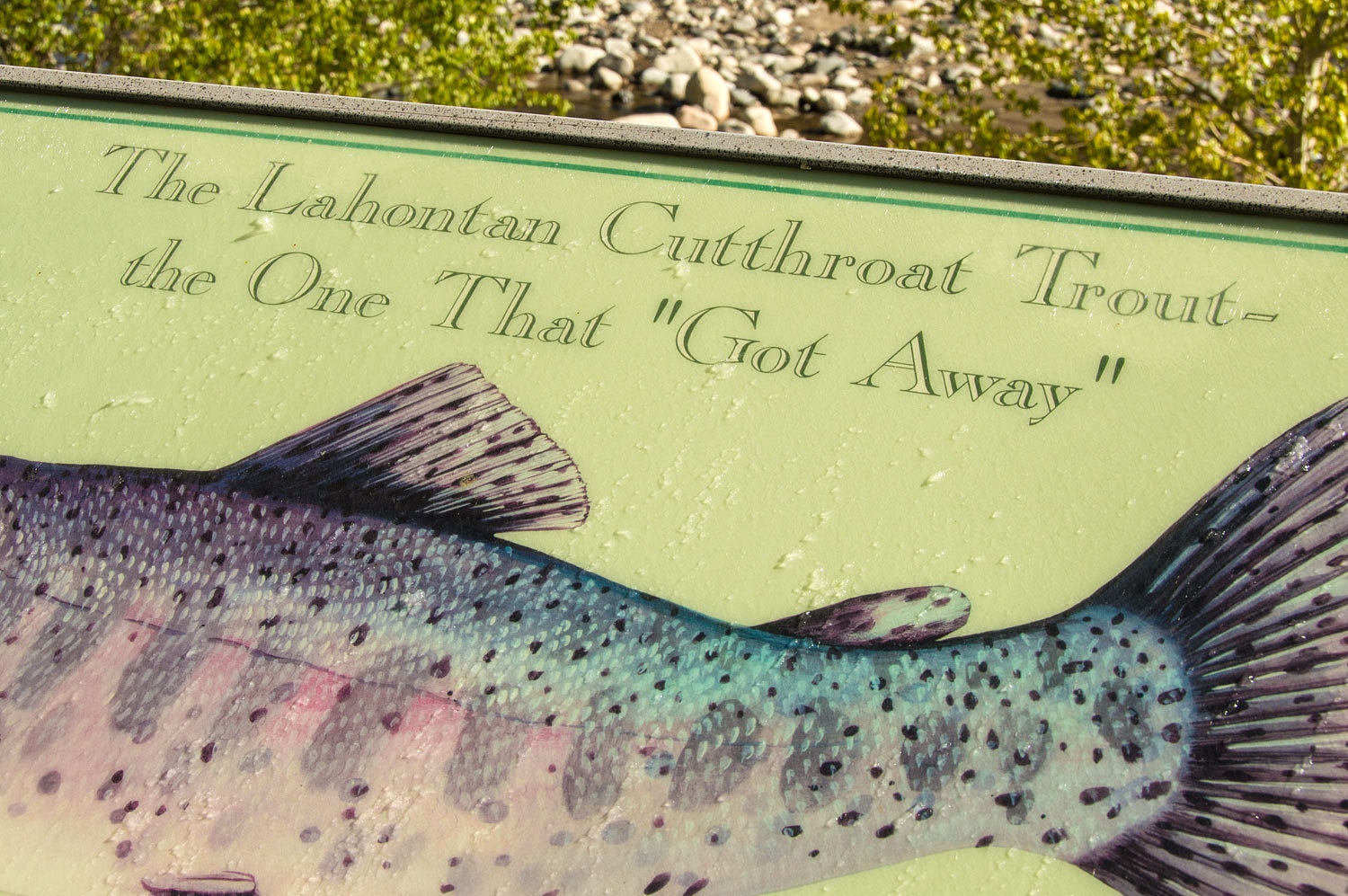
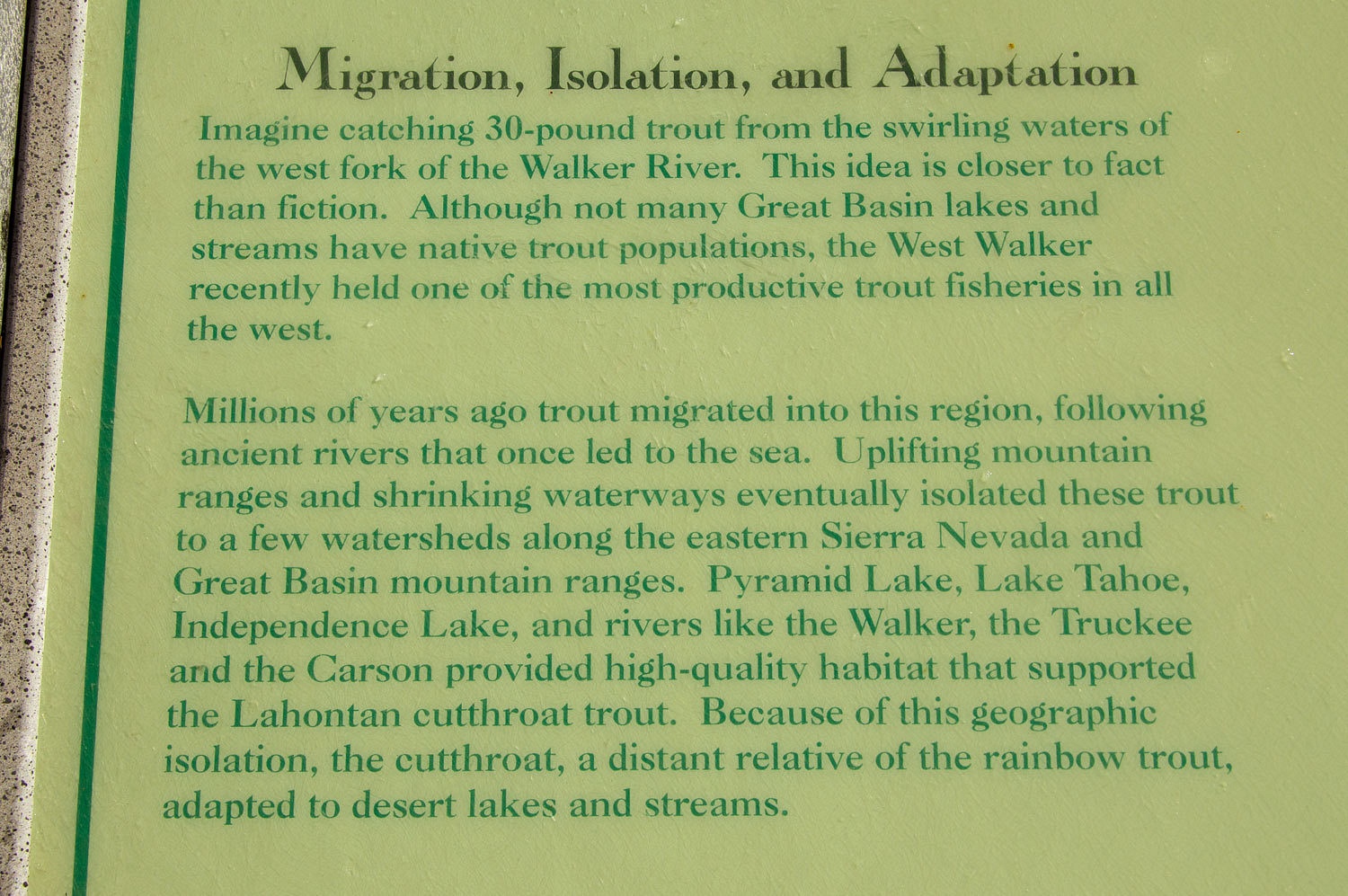
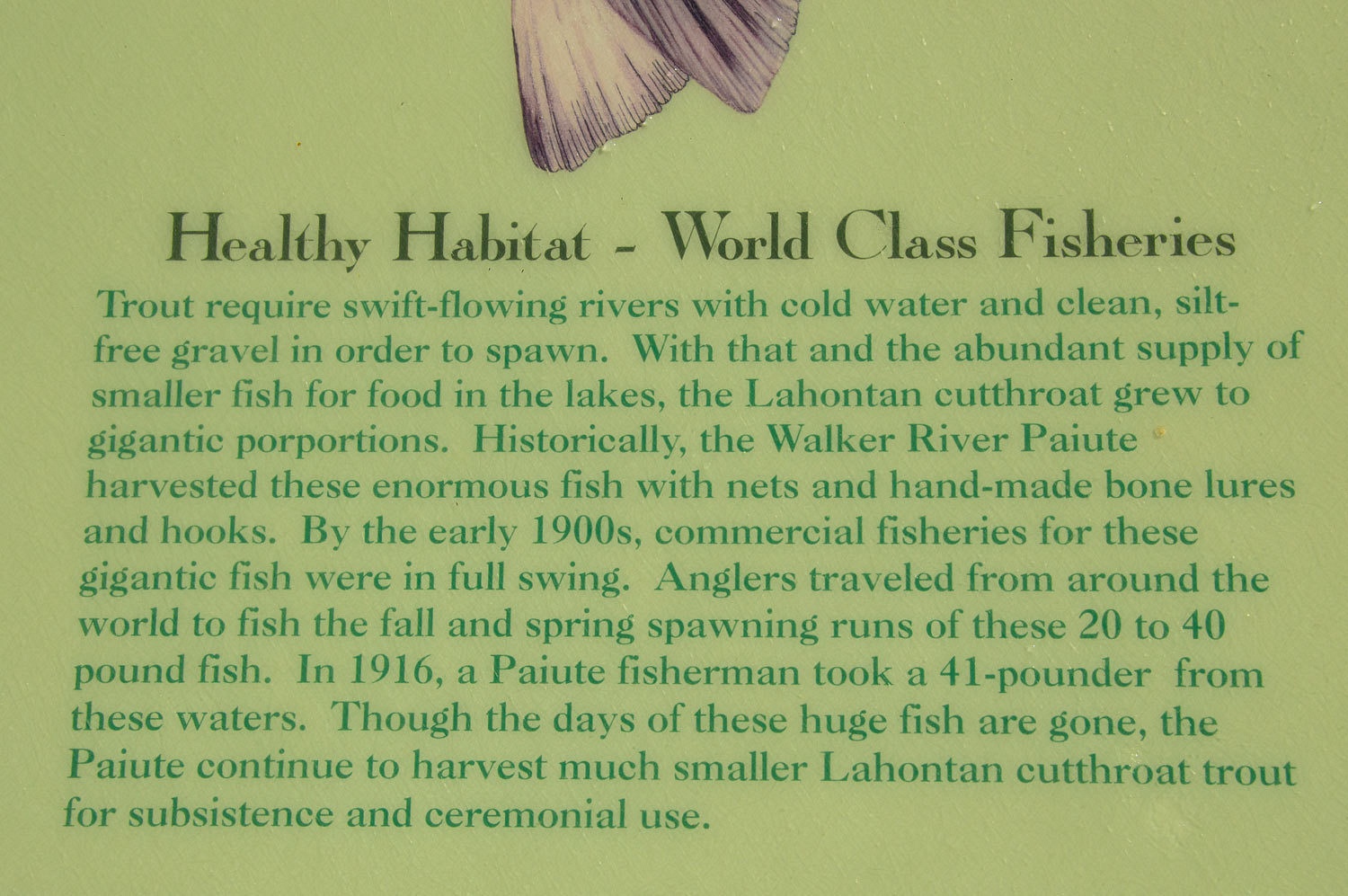
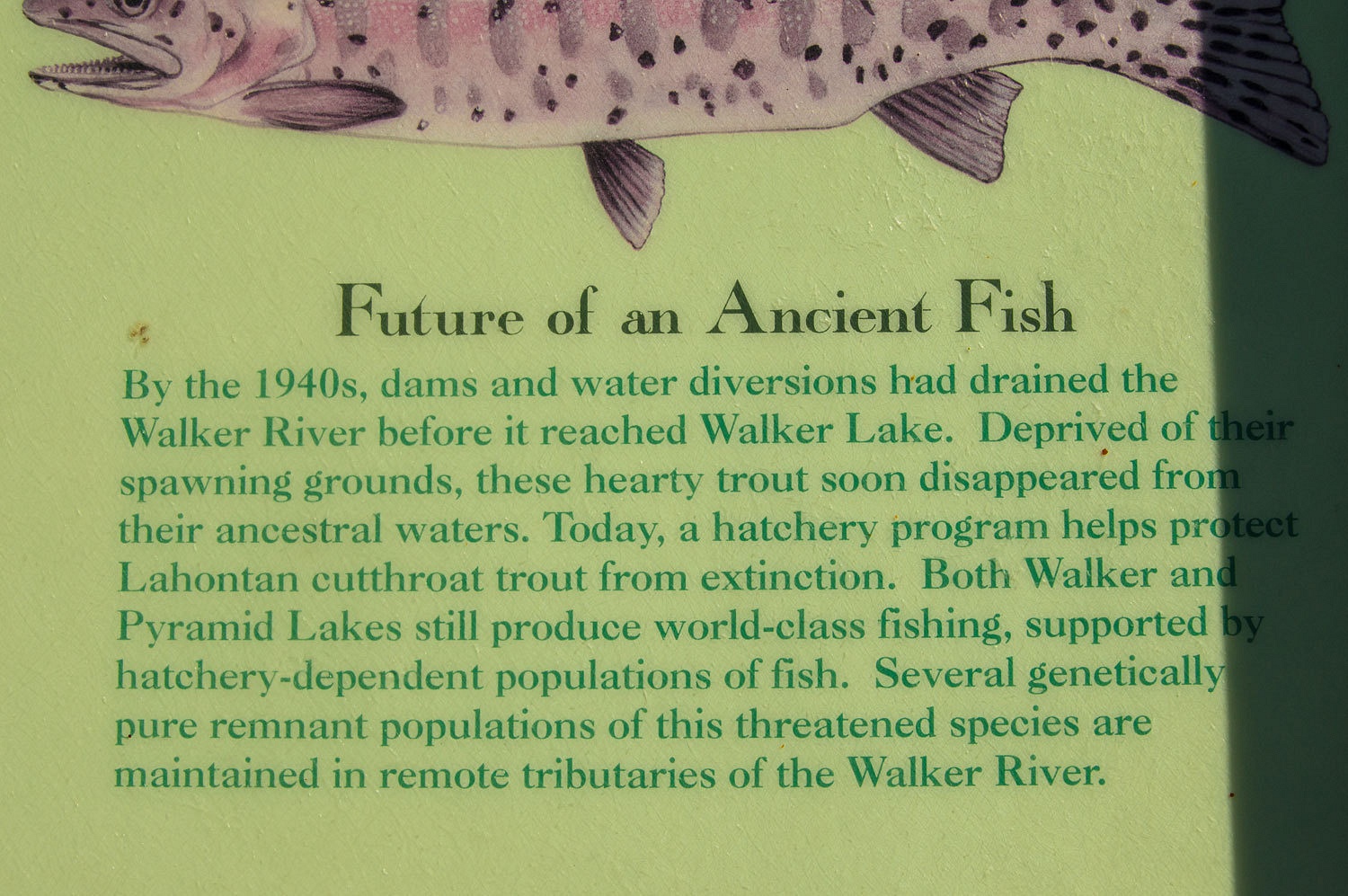
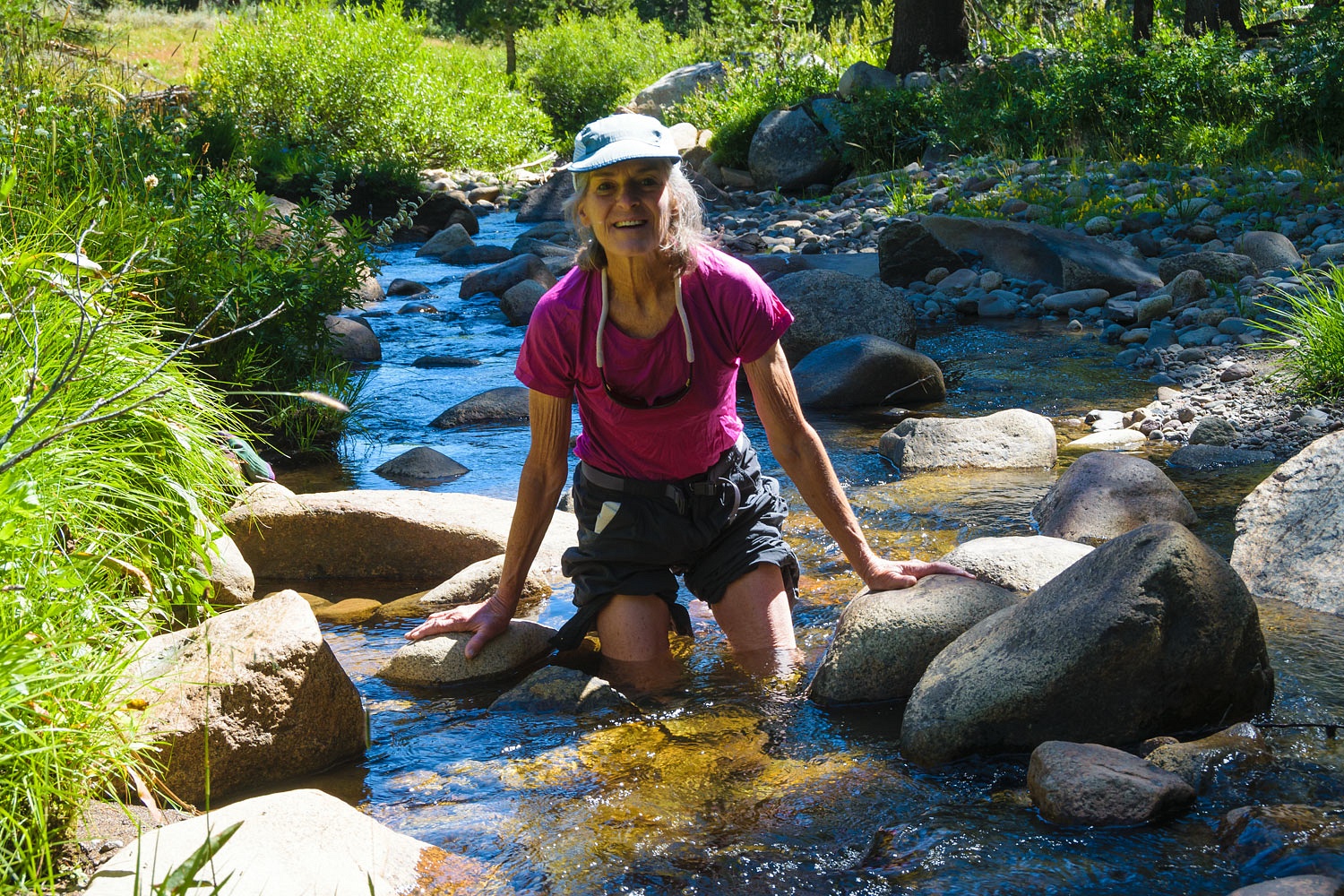
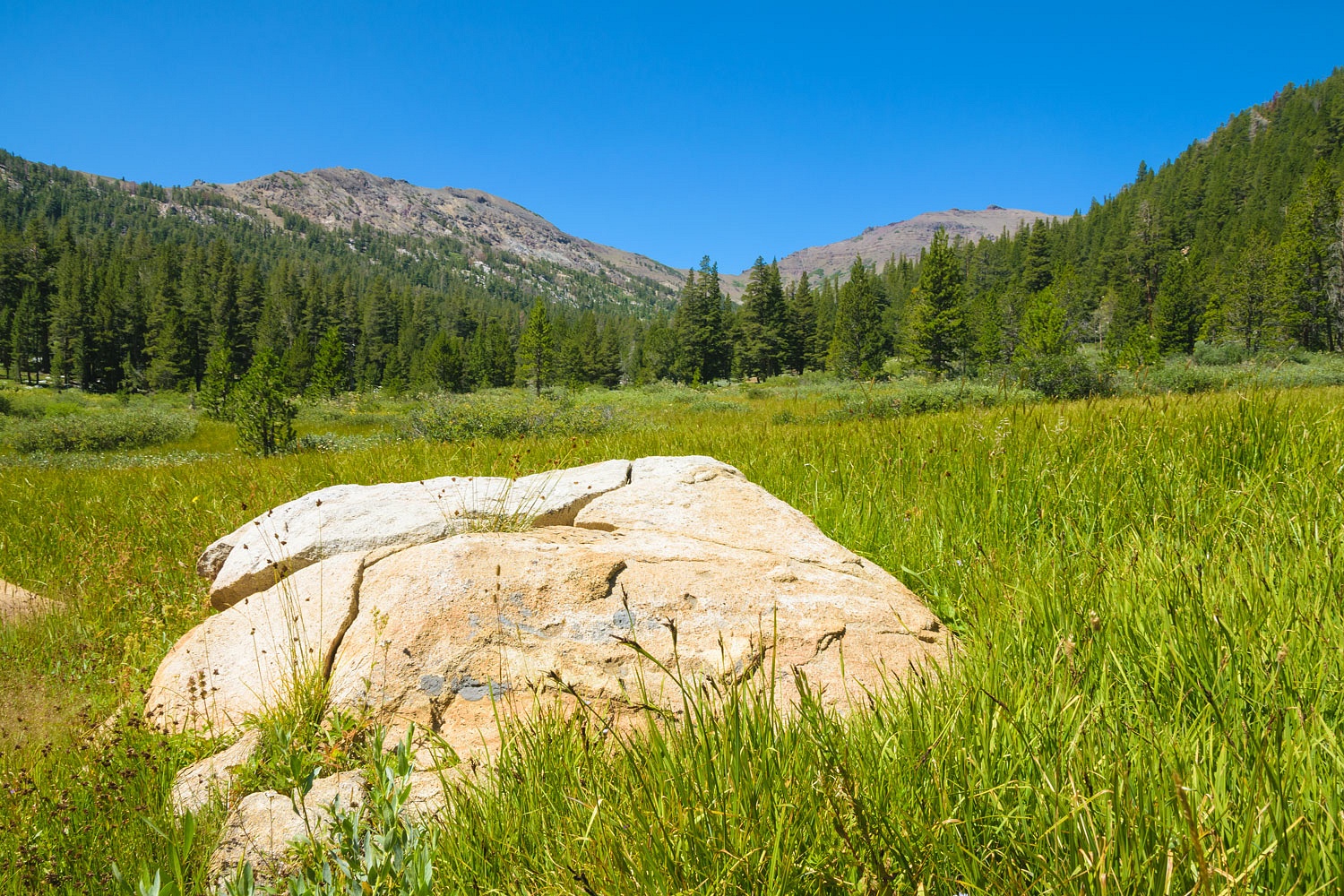
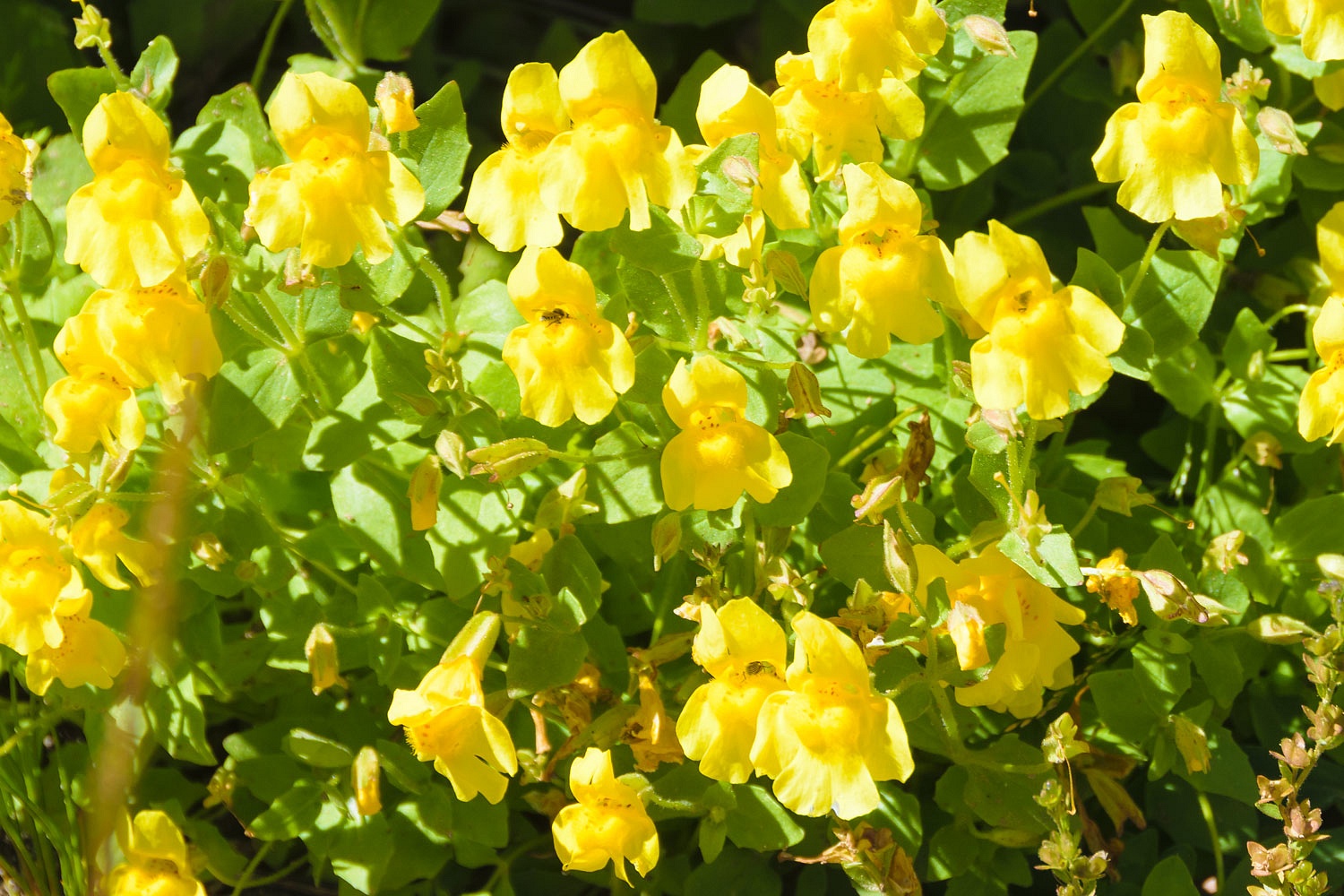
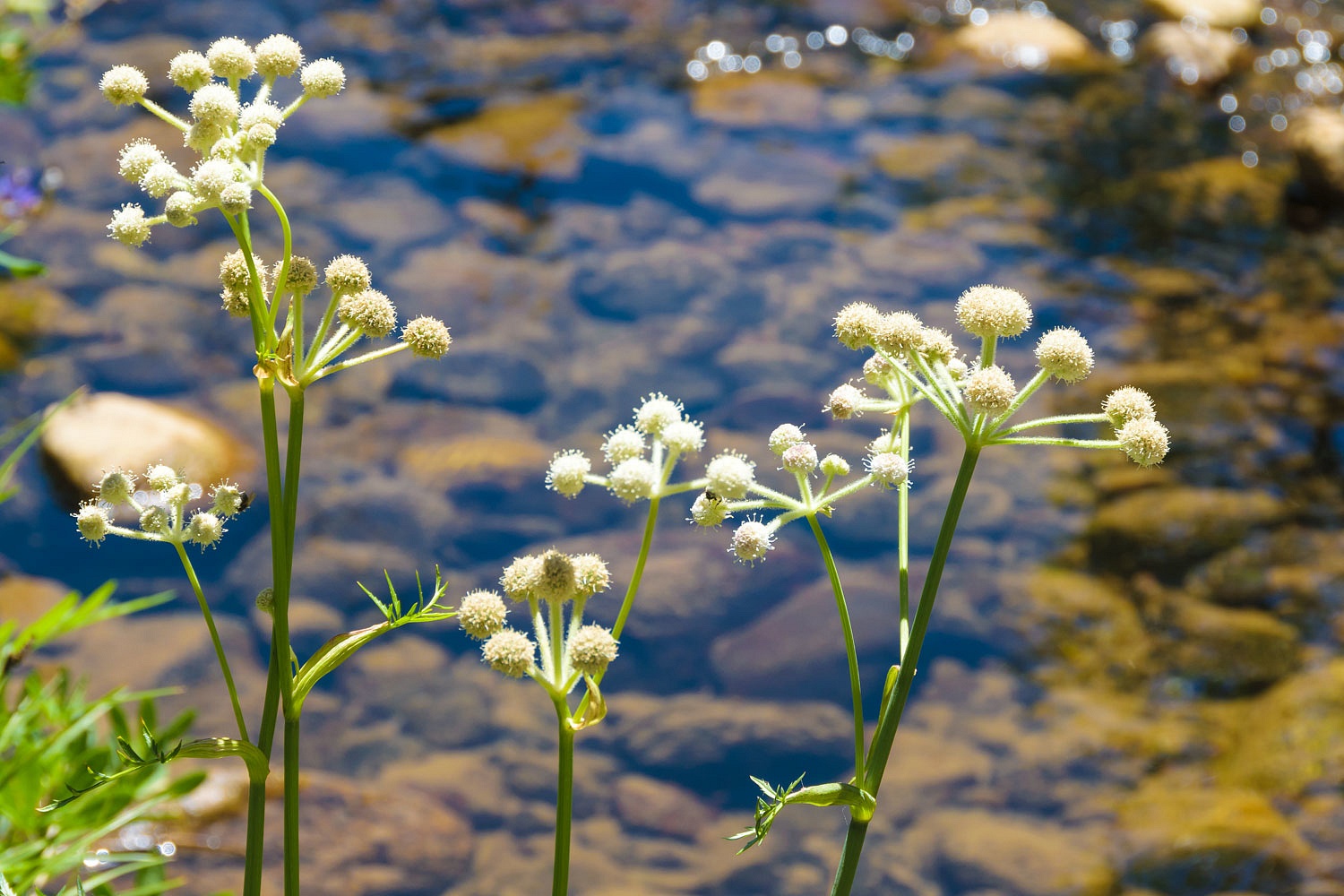
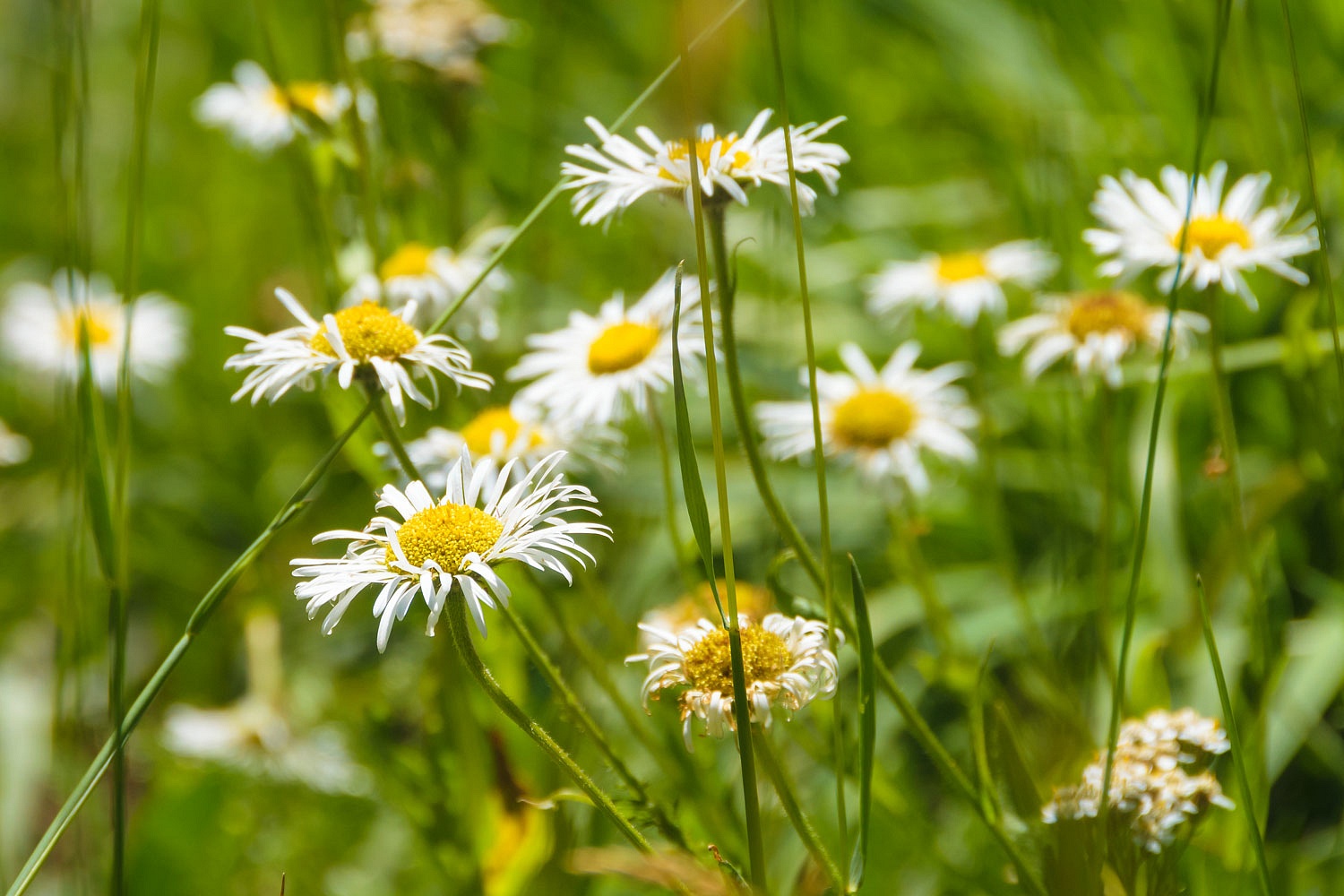
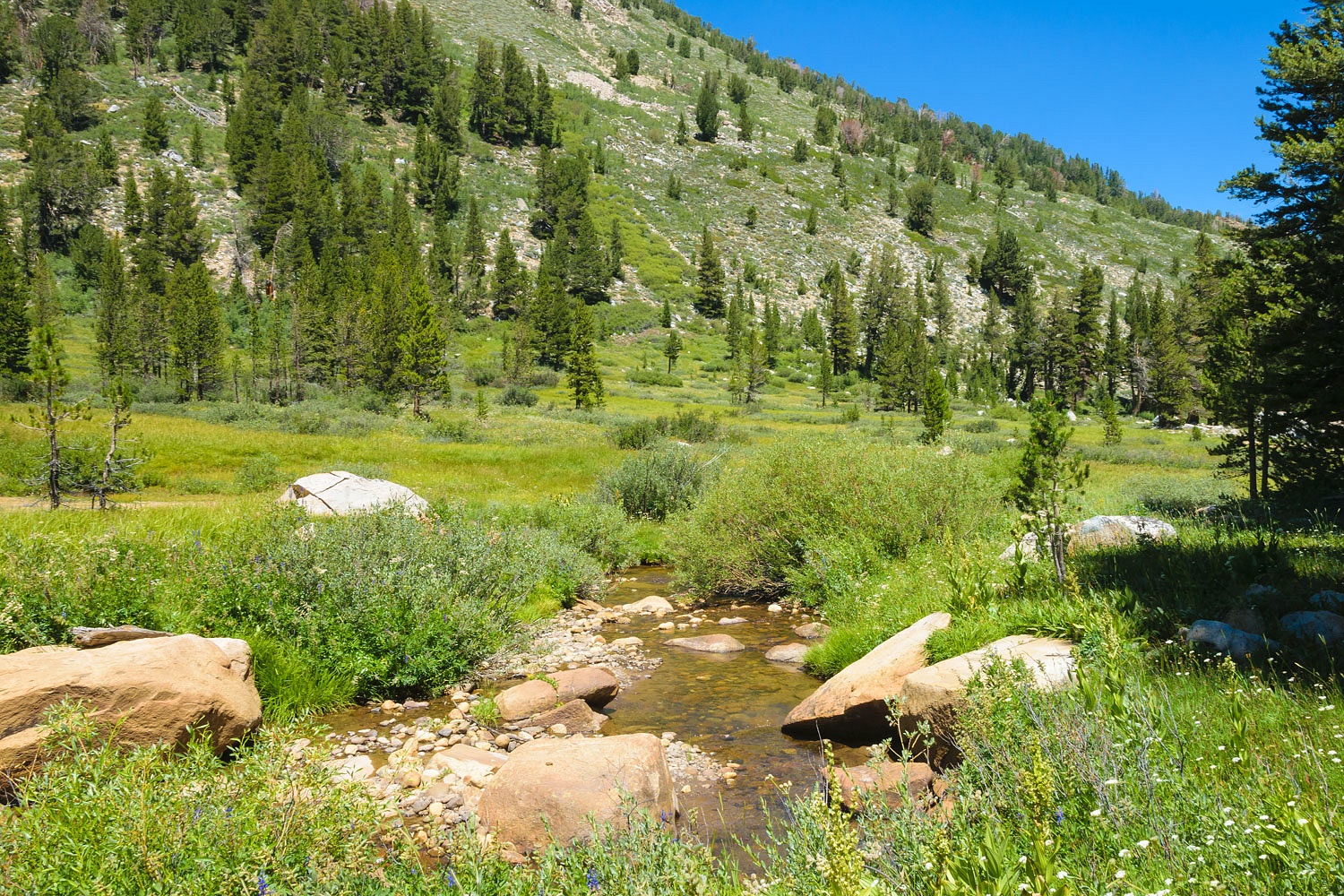
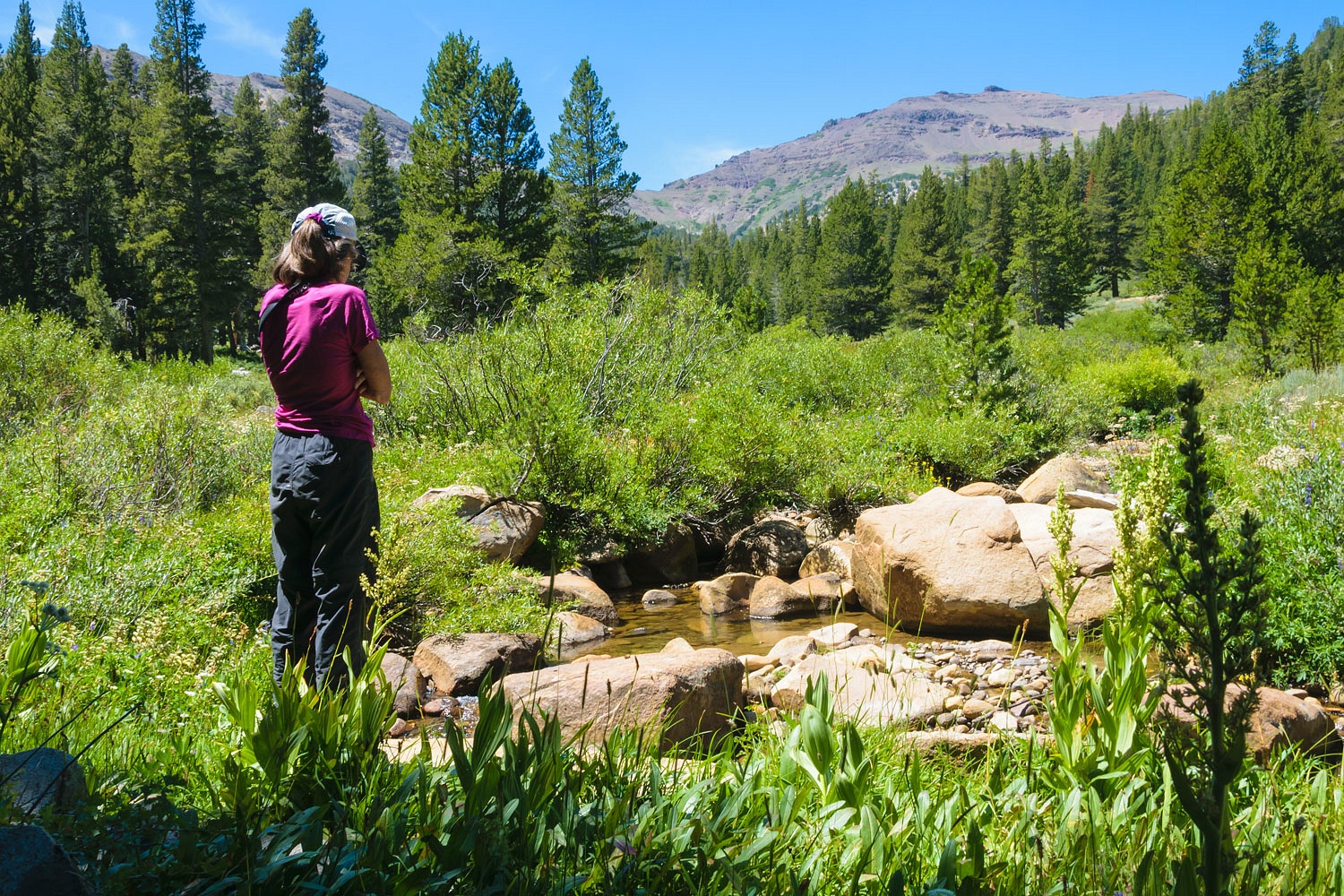
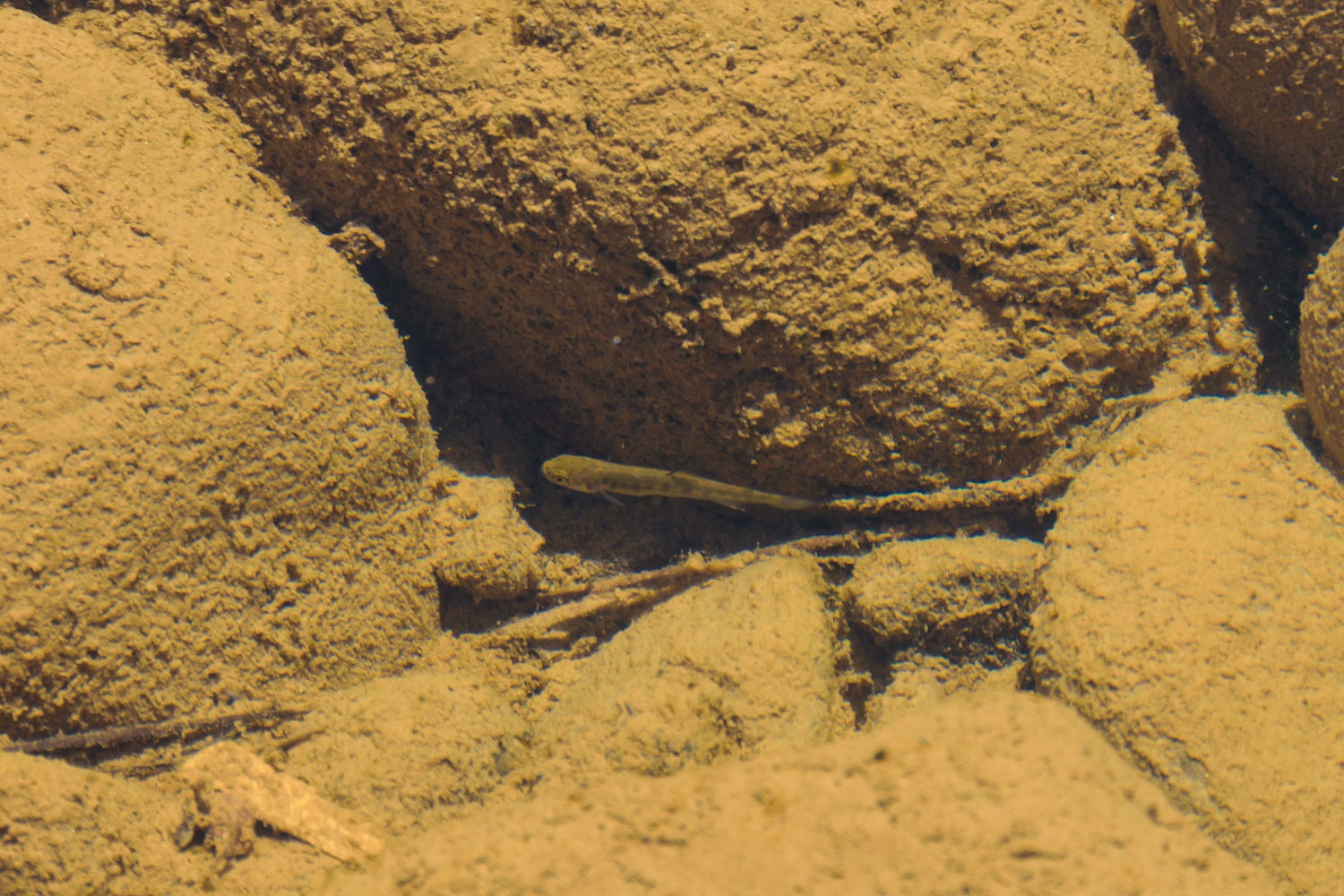
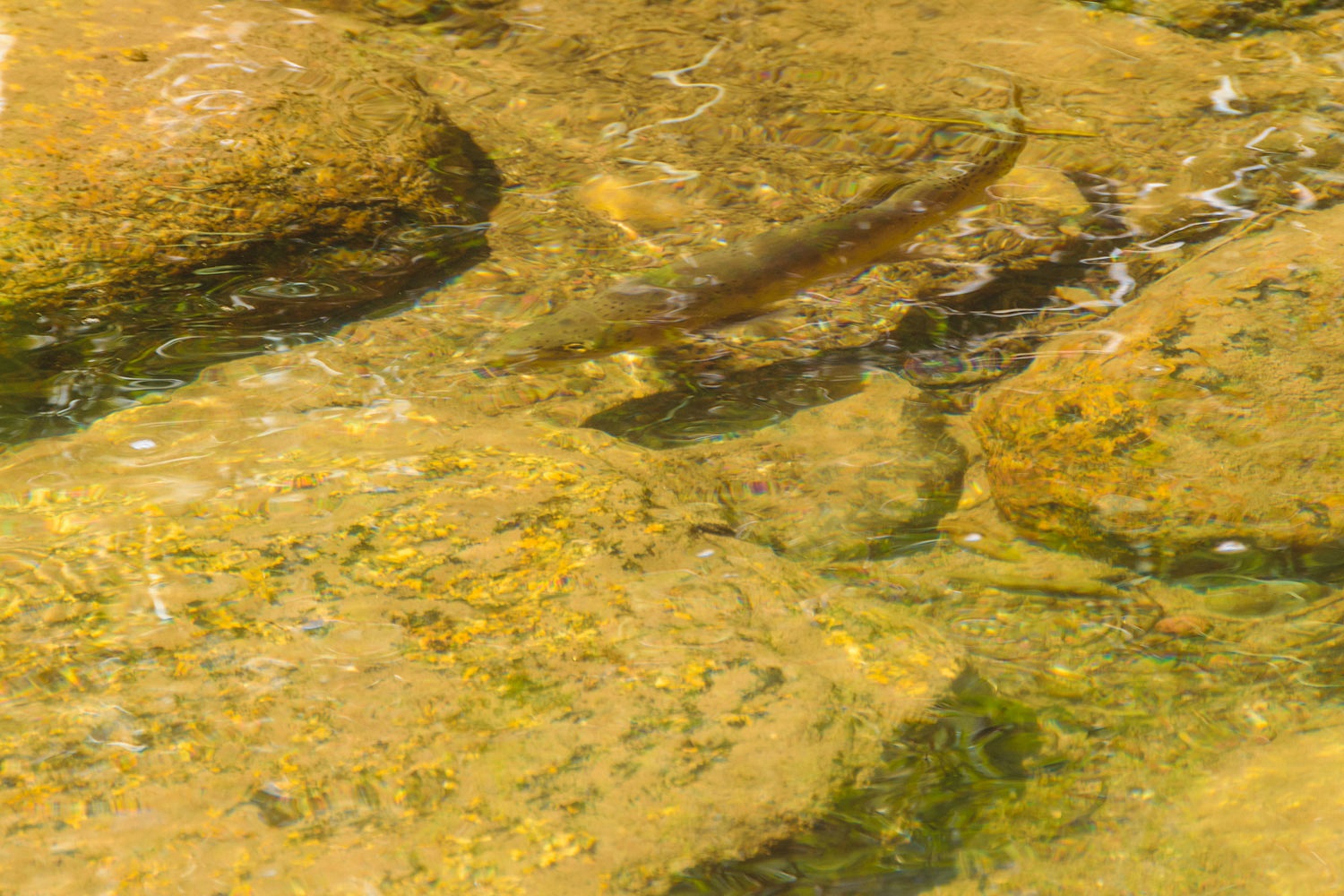
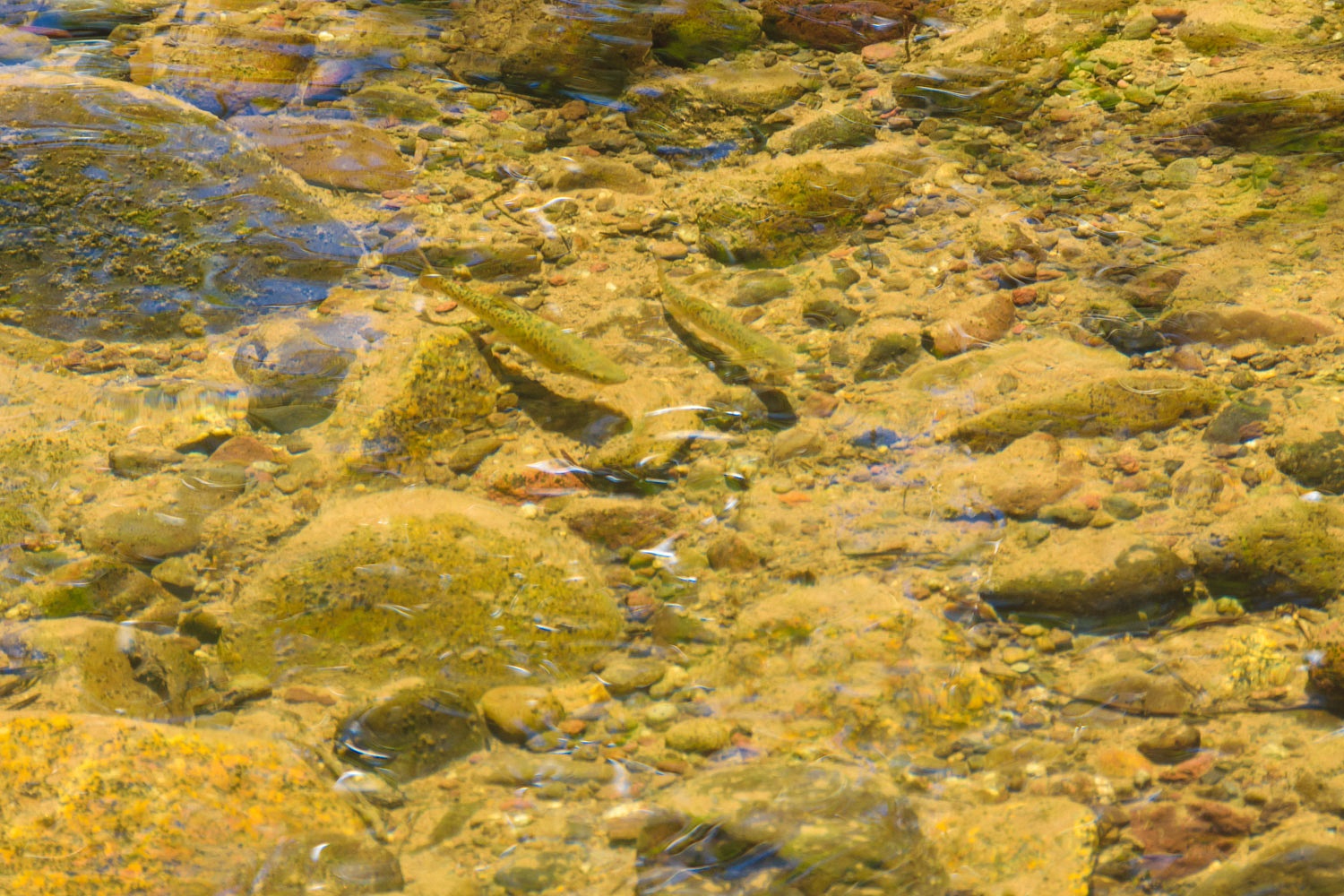
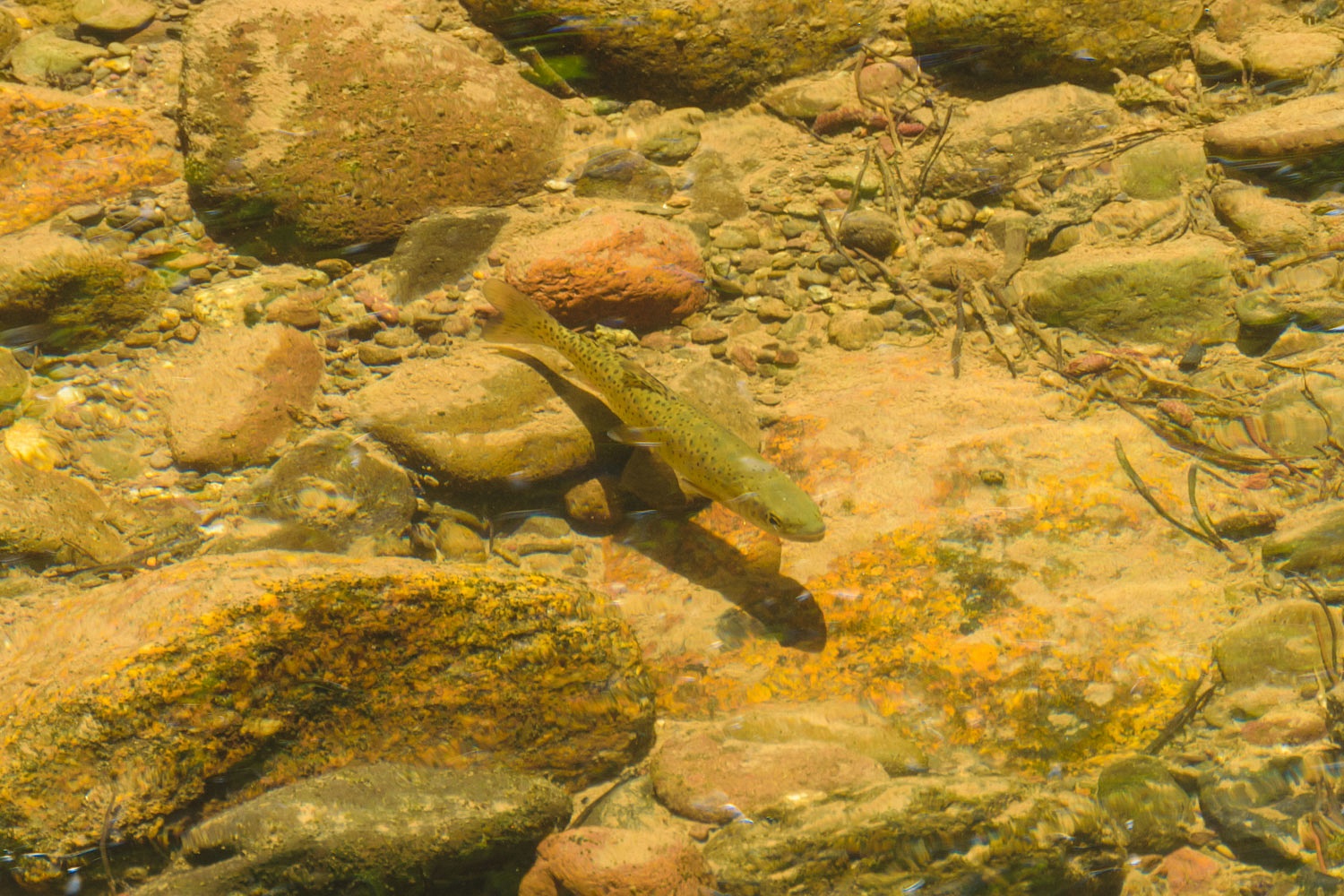
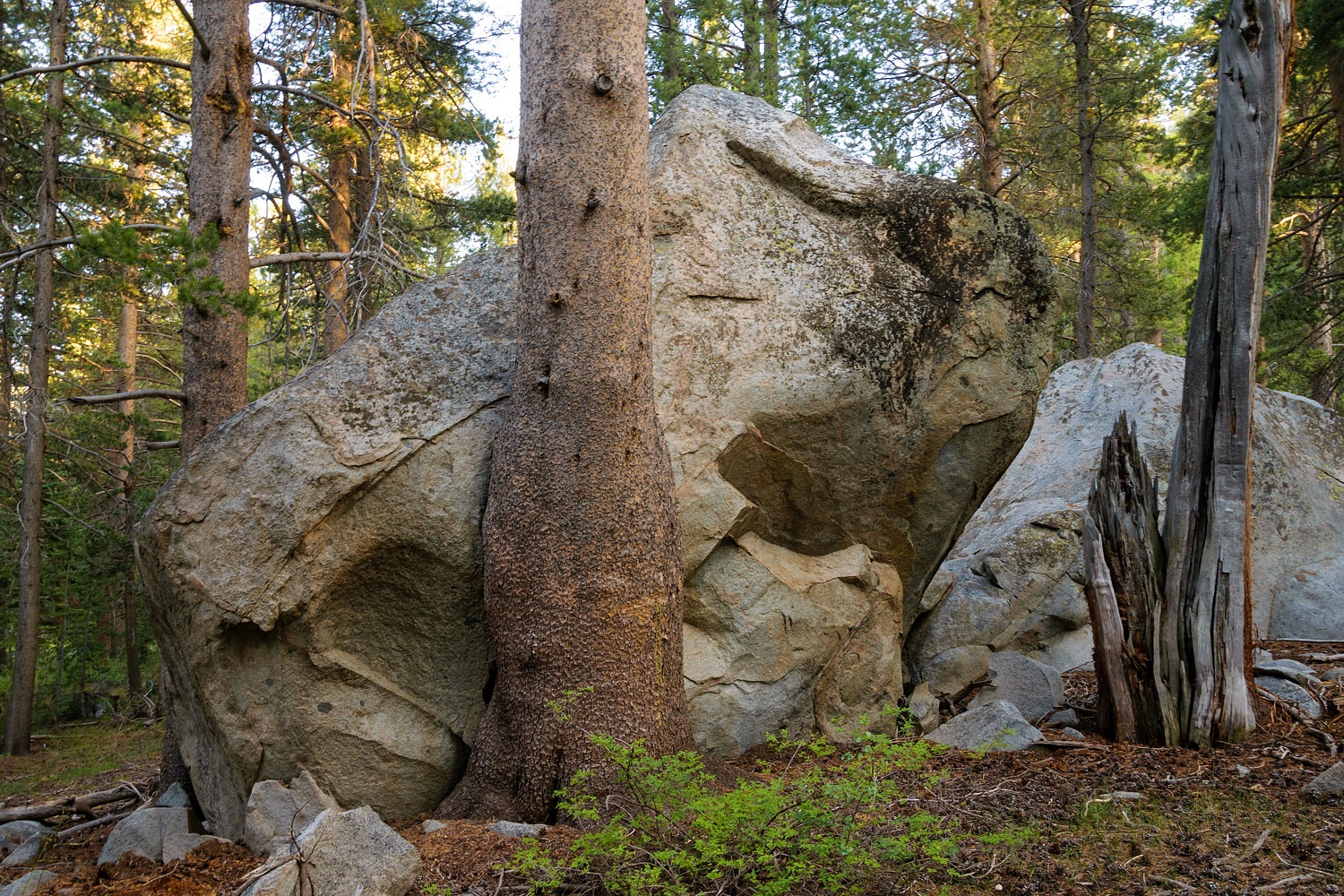
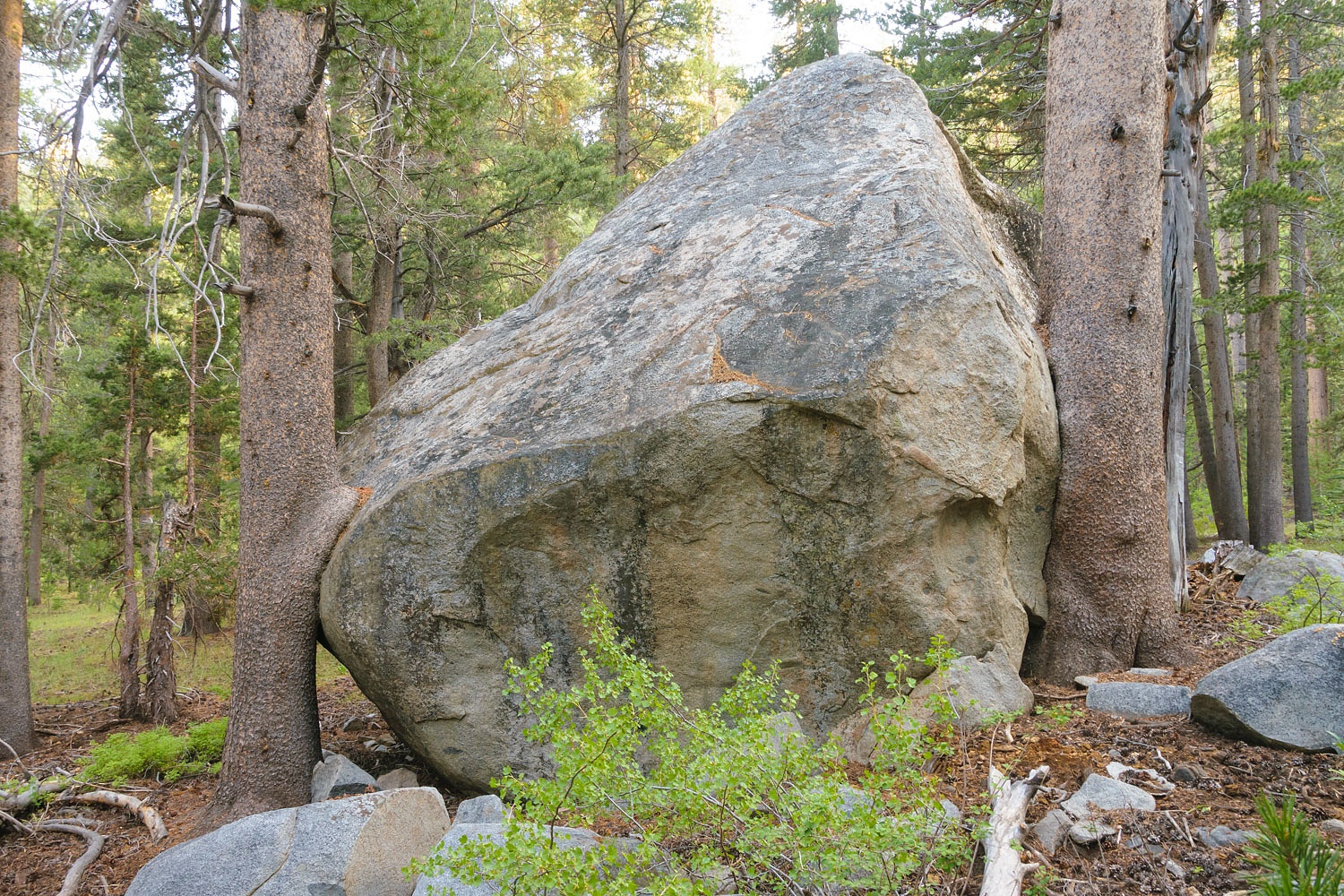
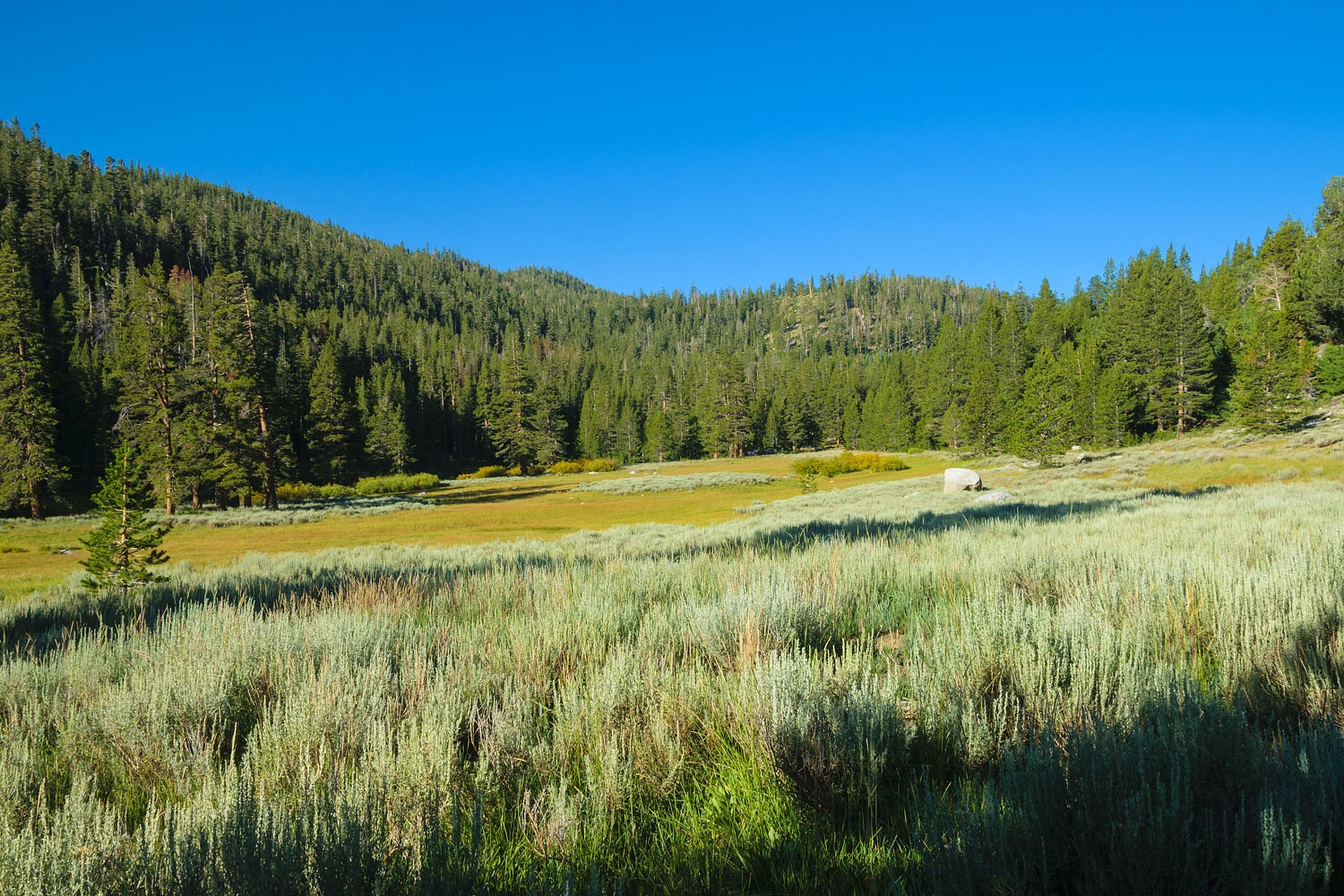
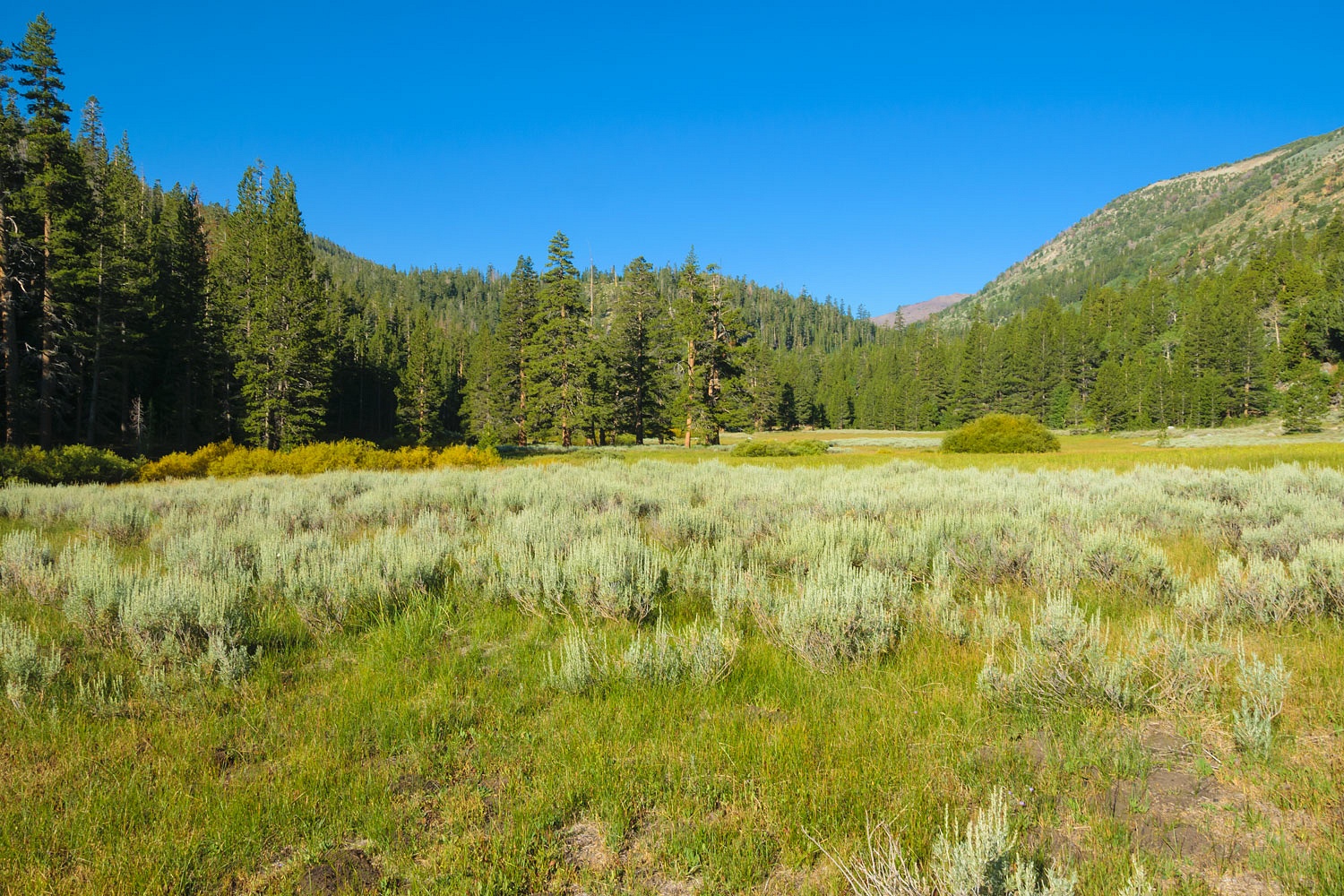
Wonderful TR! So glad to see Julie getting her confidence back in uneven terrain. Great place to ice a knee!
ReplyDeleteThanks Mr. Sage! We appreciate the nice comments and keeping track of us.
DeleteRoad to recovery sounds good. Great two day trip.
ReplyDeleteYes Bill, Julie is progressing well and very happy with the results. Heading on to round two, the left knee.
DeleteOne wet winter will clear out that silt. Let's hope for the best!
ReplyDeleteYes, we'll sure hope of the best and a good old fashion winter. Wouldn't that be nice? Thanks for checking in, Dan!
Delete